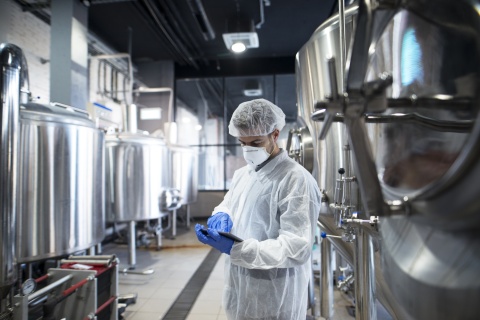Seamless Shift Integration
The increasing complexity of drug products brings pharmaceutical companies significant manufacturing challenges arising from the pandemic. This includes disrupting supply chains and requiring changes to business and operational processes to accommodate social distancing, remote work and quarantining. The industry has been in constant transition from producing block-buster medicines towards personalized medicine to break-through vaccines, which for production teams, means there will be increasing variations in the production processes.
These challenges mean that communication between members of the manufacturing team is paramount. This requires a lot of agility and the right tools and systems to automate and instantaneously capture key communications and critical information during shift handovers.

Shifts Communications in BioPharma
One biopharma company initially focused on automating microbial quality control quickly expanded after Covid-19 to deliver contaminant testing for pharmaceutical and vaccine manufacturing. The need for digitalizing shift management became more dire as this pandemic ignited the need to shorten the supply chain for critical drugs and vaccines while enabling biopharmaceutical companies to operate their manufacturing facilities with reduced staff.
In this example, the second shift of cleanroom automation operators required better communications with its third shift to ensure safe operations of its automation lines to target overall equipment effectiveness (OEE) conditions and deliver quality product. Any silo of communication could mean a decrease in quality and the potential loss of customers.
Cleanroom operators conduct manufacturing in a cleanroom environment and carry out maintenance tasks related to the automation line. It’s vital that all manufacturing shifts communicate and work safely according to the company and OSHA guidelines.
A shift management system enables a smooth shift to shift transition and operators to identify past operating patterns or any background details to make proper machine adjustments, impacting quality and performance.
Automated shift handovers can be critical to complete timely validations and ensure paperwork completion. Continuous improvement efforts and accommodating a shifting work schedule for periods as needed is key.
A Break in the Clouds: Communication and Collaboration
The pandemic brought to light how we can strengthen our communication. For instance, it’s important to make communication easy by making it easy to capture, collect and store shift notes, tasks and directives.
Pharmaceutical manufacturing teams usually require a lot of face-to-face communication and are used to working together. Therefore, it’s important to develop up-front an approach on how information can be shared within the team and how the team-to-team communication should work.
Automating at a Pandemic Speed
Through automation, shifts can access an intuitive shift handover system that ensures all legal and compliance standards are being met. For instance, audit trails have accessible auditable data storage with chronological change history, since that often causes a note of contention. All those working in a shift find that it’s helpful to have all events visible at any time. A shift hand over management system allows operators to easily conform to Current Good Manufacturing Practice (CGMP) Observance of CGMP regulations assures the identity, strength, quality and purity of drug products by requiring that manufacturers ensure adequate control of manufacturing operations.
The Result of Digitalized Communications
Digitalizing and automating shift handovers has become more important than ever because it can result in improved pharmaceutical production, increased performance, reduced risks and time savings.












